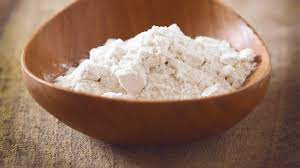What Are the Benefits and Risks of Cellulose Gum? Peggy Pletcher, M.S., R.D., L.D., CDE
Used in all different food products, cellulose gum is a thickening agent. To give food a more thick and creamier consistency, many low-fat and diet products use food additives like cellulose gum. It can stabilize foam, stop sugar from crystallizing, improve texture, bind water, and many more. Cellulose gum may work as an appetite filler. That is why this particular additive is found in many diet foods. If too many foods high in cellulose gum are eaten, some people experience looser bowel movements; which is also why some people use it as a laxative to aid in weight loss. Cellulose gum is found is other things besides food, including toothpaste, household products, and pharmaceuticals. It is considered a safe food additive, however, some scientists still pose questions on the potential unknown risks. According to the Center for Science in the Public Interest (CSPI), they caution that this additive isn’t has healthy as the fiber found in natural foods. Although it is not a common occurrence, some people may have an allergic reaction to cellulose gum.
What is Carboxymethyl Cellulose (CMC) / Cellulose Gum (E466) in Food and Uses?
James Han
Cellulose gum is a multi-functional ingredient that is used as a food binder, thickener, stabilizer, and emulsifier. CMC is usually made into its sodium salt due to its poor water solubility. Cellulose gum thicks and stabilizes many foods by retaining moisture, produces consistent texture and more. It is considered to be vegan because it is a plant based fiber, and it is gluten free. There are two steps in the manufacturing process of CMC: Alkalinization—a process that lowers the amount ion acid in a solution, and Etherification—the dehydration of an alcohol to form ethers or pleasant-smelling, highly flammable volatile liquids. It is a slightly white, yellowish or greyish, tasteless and odorless, small grainy powder. Also, cellulose gum can absorb water very easily in either cold or hot water. Typically, the viscosity to consistency is associated to the DP or polymerization degree of cellulose, the solution concentration, the pH value, temperature, degree of substitution, and etc. The main uses of CMC: to stabilize the particles of beverages and improve the mouthfeel; improve texture and volume and prolong the shelf-life and retain moisture; and to bind water and improve production. Cellulose gum is considered a safe food additive according to the Food and Drug administration (FDA).
Effects of Cellulose Gums on Rheological Interactions in Binary Mixtures of Xanthan Gum and Locust Bean Gum
Wonjun Jo and Byoungseung Yoo
Gums or hydocolloids are commonly used in the food industry as ingredients for the control of texture, shelf-life, flavor, and microstructure. To improve the textural and state of matter properties of food products, they are used as thickening, stabilizing, and gelling agents. Gums including cellulose gum (CGs) or carboxymethyl cellulose (CMC), xanthan gum (XG), locust bean gum (LBG), guar gum (GG), and hydroxypropyl methylcellulose (HPMC) are all used as food thickeners for easy, safe swallowing.
Effect of gel-forming gums on the intestinal unstirred layer and sugar transport in vitro
I T Johnson, J M Gee
A study investigated the effect of two gel-forming polysaccharide gums, guar gum, and carboxymethyl-cellulose on glucose transport in vitro using the everted sacs of rat small intestine. The trails reported that glucose transport with or without adding guar gum was revealed to be sensitive to muscosal stirring. Also, the the incubation with guar or CMC led to an increase in the thickness of unstirred fluid layer overlying the mucosa. The end results concluded that a polysaccharide gum in the fluid film increases its viscosity.
The Role of Carrageenan and Carboxymethylcellulose in the Development of Intestinal Inflammation
John Vincent Martino, Johan Van Limbergen, and Leah E. Cahill
A variety of animal studies have reported that Carrageenan and Carboxxymethylcellulose (CMC) influence histopathological characteristics that resemble inflammatory bowel disease while the alteration of microbiome, disruption of the intestinal epithelial barrier, inhibition of proteins that protect against microorganisms, and stimulation of the pro-inflammatory cytokines. The results of these studies demonstrated that Carrageenan and CMC caused intestinal ulcerations. There is concern amongst the scientific community about these findings because Carrageenan and CMC are very popular in the processed food industry and children. More research is needed to fully examine the role of these gums in the microbiome alteration of intestinal inflammation; however, it may help with the discovery of the nutritional strategies to prevent or treat disease.
In Situ Synthesis of Silver Nanoparticles in a Hydrogel of Carboxymethyl Cellulose with Phthalated-Cashew Gum as a Promising Antibacterial and Healing Agent
Ana Karina Marques Fortes Lustosa, Antônia Carla de Jesus Oliveira, Patrick Veras Quelemes, Alexandra Plácido, Francilene Vieira da Silva, Irisdalva Sousa Oliveira, Miguel Peixoto de Almeida, Adriany das Graças Nascimento Amorim, Cristina Delerue-Matos, Rita de Cássia Meneses de Oliveira, Durcilene Alves da Silva, Peter Eaton, and José Roberto de Souza de Almeida Leite
Researchers examined the development of a carboxymethyl cellulose-based hydrogel containing silver nanoparticles to determine the antibacterial and antimicrobial properties of the gel. It has been reported that silver nanoparticles can provide protection against infection. In the study, the particles were prepared with the CMC hydrogel in situ, and then distinguished through nanoparticles tracking analysis, UV-vis spectroscopy, rheological measurements, and transmission electron microscopy analysis. The results of the study proved the antimicrobial activity of silver-nanoparticle hydrogels. For the use of would-healing treatment, the CMC nanoparticle hydrogels have excellent potential.
Use of Natural Gums, and Cellulose Derivatives in Production of Sustained Release Metoprolol Tablets
Jaleh Varshosaz , Nasser Tavakoli, S Ali Eram
Xanthan/guar gums, as well as hydroxypropyl methyl cellulose carboxymethyl-cellulose polymers, were used to make metoprolol tartrate sustained-release tablets using the direct
compression process. Although tablets with 100 percent xanthan had the fastest mean dissolution time and the lowest DE(8) percent in the gum formulations, increasing the xanthan decreased the release rate of metoprolol and other formulas. Natural gums are found to be ideal for the manufacture of metoprolol continuous release tablets.
Water adsorption isotherms of carboxymethyl cellulose, guar, locust bean, tragacanth and xanthan gums
María D Torres , Ramón Moreira , Francisco Chenlo , and María J Vázquez
An experiment conducted was aimed to determine the water absorption isotherms of carboxymethyl cellulose (CMC), gaur hum (GG), locust bean gum (LBG), tragacanth gum (TG)m and xanthan gum (XG) at different temperatures. The results of experiment reported in all gums, there was an increase in temperature at each water activity value while the equilibrium moisture content decreased. With respect, CMC and GG gums were the least and the most hygroscopic gums.
Effects of various cellulose gums on the quality parameters of low-fat breakfast sausages
G S Mittal and S Barbut
Researchers investigated the textural, composition, hydration, viscoelastic, sensory, and color features of both regular and low-fat pork breakfast sausages with and without carboxymethyl cellulose (CMC) and microcrystalline cellulose (MCC). The experiment results show that product lightnesss was reduced in both MCC and CMC, and MCC was more effective in retaining moisture compared to CMC. In addition, springiness was reduced by CMC and stuck together by other cellulose gums. High fat products were less elastic and easier to chew compared to low fat products.

